HP Stream 7 Review: A $119 Windows Tablet
by Brandon Chester on December 19, 2014 8:00 AM ESTDisplay
The display is one of the most important aspects of a device, as it's the portal for interaction between the user and the software. Unfortunately, with inexpensive devices like the Stream 7, the display is often the first thing to be put on the chopping block. It's simply very difficult to put a high quality panel in a low cost device and make money selling it. That being said, HP has actually attempted to put a decent panel in the Stream 7 considering its price target.
Like I stated before, many other tablets at this size and price point either opt for a TN panel, or they reduce the resolution to 1024x600 or even go lower to 800x480, which is borderline unusable. HP has put a 1280x800 IPS panel in the Stream 7, which is fairly good considering that two years ago most Android tablets of any size shipped with that same resolution. The glass is highly reflective, and this is coupled with the fact that the display isn't laminated. There's also some light bleed at the bottom, but at $119 I can excuse this.
Of course, specs that you read on paper like size and resolution only tell part of the story. Color accuracy, brightness, and contrast all have an impact on overall display quality, and to measure these we use SpectraCal's CalMAN 5 software along with X-Rite's i1Pro 2 spectrophotometer and i1Display Pro colorimeter.
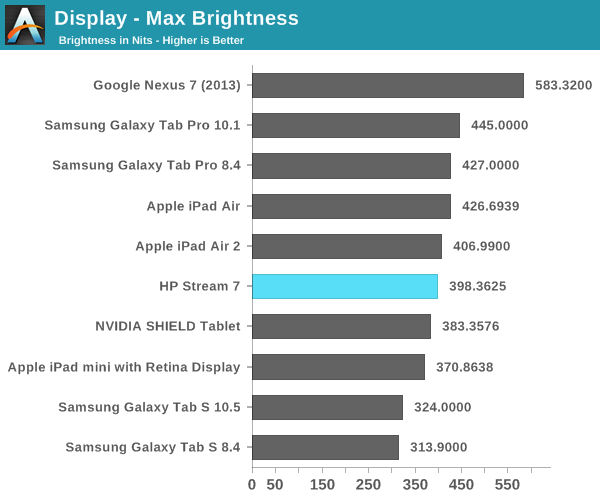
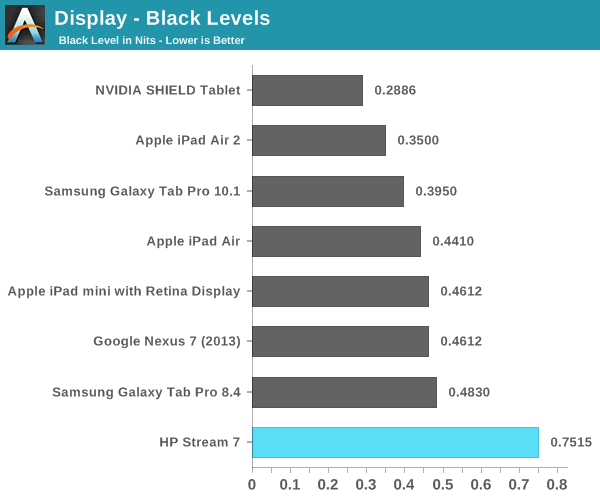
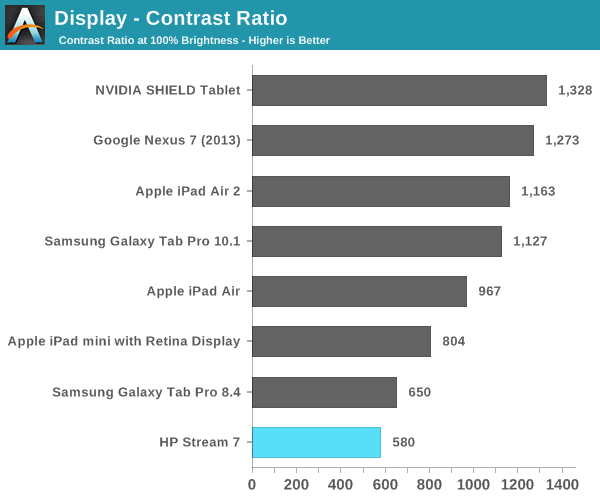
As you can see, the brightness of the Stream 7 is competitive with other tablets. Unfortunately, the black levels are just too high, which in turn leads to a very low contrast ratio. It should be noted that these measurements were achieved by disabling Intel's Display Power Saving Technology (DPST) feature, which causes dynamic brightness and contrast depending on the image displayed on the screen. While some other devices do this to some degree, DPST ended up reducing max brightness measurements by nearly 100nits, and the constantly changing brightness played havoc with measurements during analysis and calibration.


In the grayscale we see a shift toward blue, with the red steadily dropping off as brightness increases. This leads to the grayscale performance being some of the worst we have tested, but at $119 there's really no room for HP to do any calibration to the display panels at the factory.
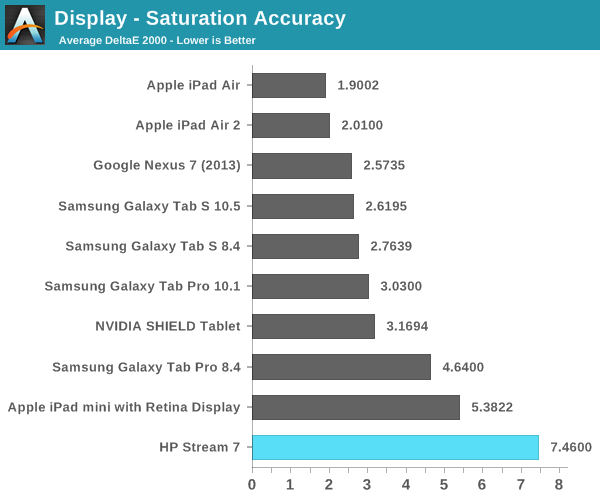
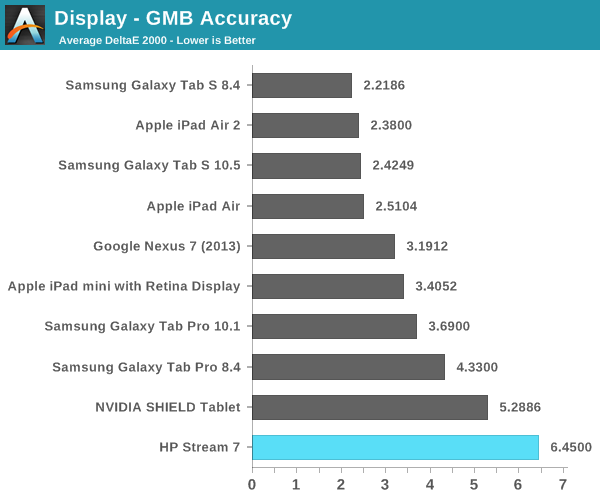
As with the grayscale test, we see poor performance in the saturation sweep. The display does not cover all of sRGB, and we see that for each 20% increment in the saturation sweep, the red, blue, and magenta saturations are all 20% lower than they should be and just generally inaccurate. The poor grayscale and saturation performance leads to a high average error in the color checker test, which means that the Stream 7 is not going to be able to accurately reproduce colors.
Again, this is to be expected with a device of this price point. It does however provide a good example of how the idea that IPS technology correlates with color accuracy is a misconception. With the prices of IPS displays being driven into TN territory by affordable eIPS panels, having an IPS display really just guarantees better viewing angles than a TN panel, nothing more.
One last thing to note about the display which does not show up in any measurements is that it is a 6bit + AFRC eIPS panel. This is not uncommon even in desktop monitors that cost as much as $400, but it does mean that there is noticeable posterization compared to a display with actual 8-bit color depth for red, green, and blue. This is not helped by the fact that Internet Explorer is not smart about displaying images; it doesn't seem to apply the same dithering that Chrome and Firefox do to mask color banding.
Calibration
Fortunately, the HP Stream 7 runs Windows. Unlike Android and iOS, Windows has color management capabilities. This allows us to calibrate the Stream 7 in an attempt to fix some of the issues with the display. We are working with a narrow gamut panel here so we aren't going to see much improvement to the saturation test, but we can certainly improve grayscale and color accuracy within the display's gamut.
After creating and applying an ICC profile created by CalMAN, we see a dramatic improvement in grayscale performance on the Stream 7. Gone is the shift toward blue, with a white point of 6595K that is very close to standard. Shades of grey are now accurate enough that you would be unable to see a difference from a reference monitor. These improvements unfortunately are accompanied by a significant drop in luminance, with a max display brightness of 308.5 nits after calibration.
We see slight improvement in the saturation sweep, but it's still nothing exceptional and unfortunately bound by the display's small color gamut. However, there's a significant improvement in the color checker test, although much of this can be attributed to the improvements in grayscale. There is an overall improvement in the accuracy of colors, but a few colors actually have a greater error after calibration than before. The biggest improvements are to mixtures of green and red, which has a significant impact on photos and videos by improving the accuracy of skin tones.
Overall, I'm surprised that the Stream 7 was able to be improved this much. It's certainly not perfect after calibration but it's much better. Unfortunately, I don't think many buyers of the Stream 7 are going to have the necessary equipment to calibrate the display properly, so it's more of an academic exercise.


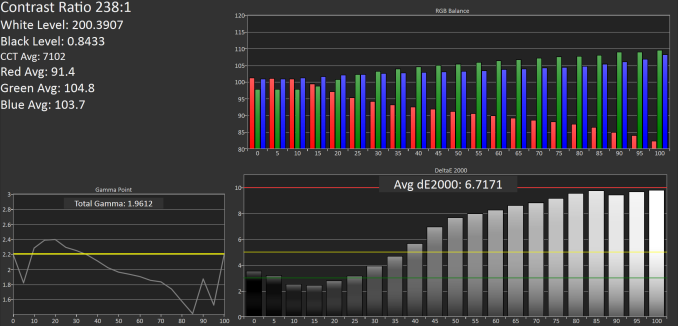
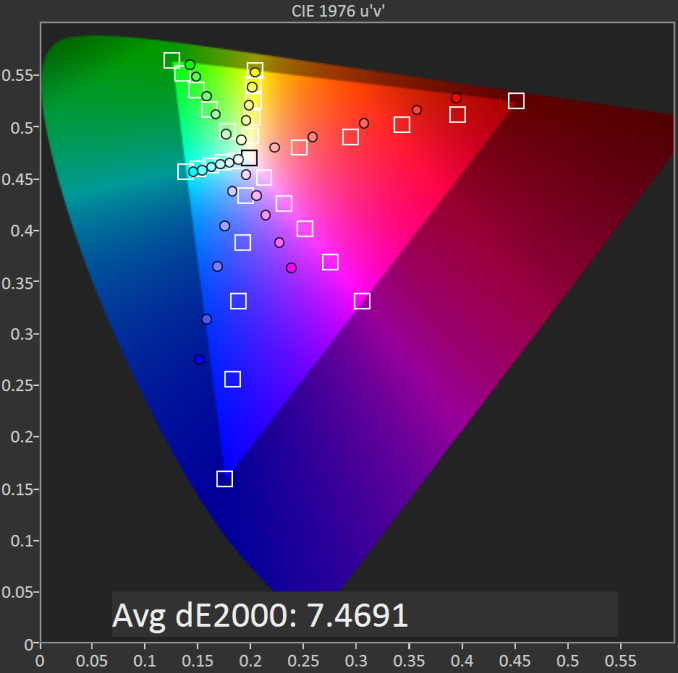
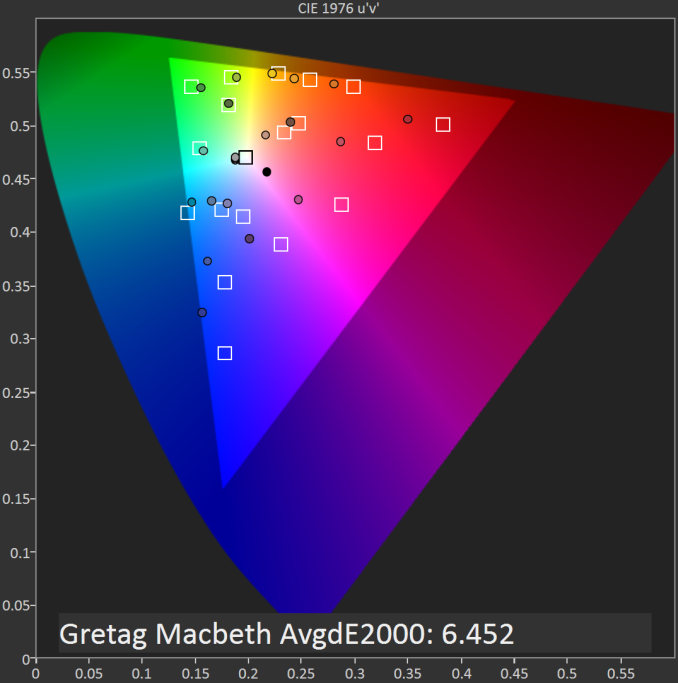
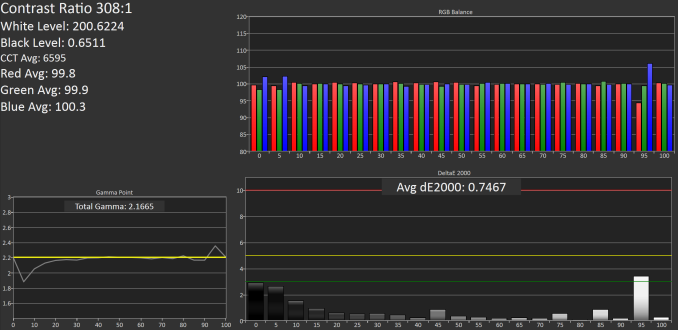
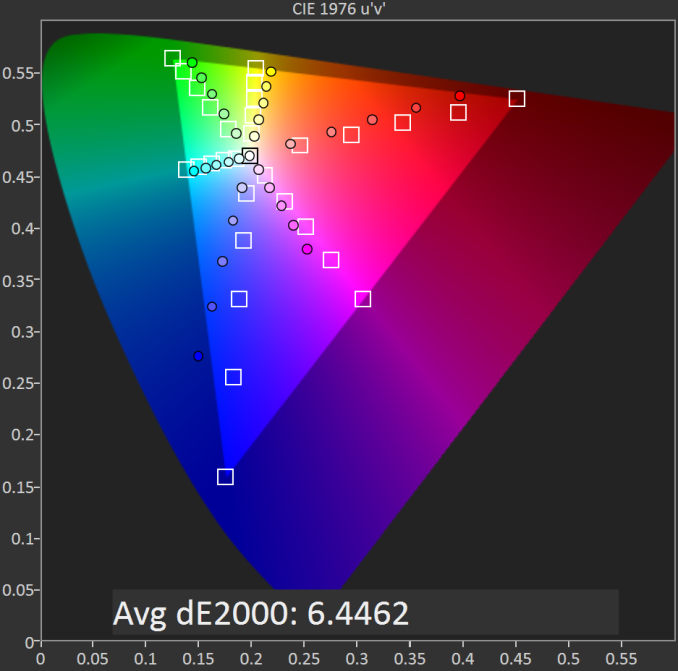
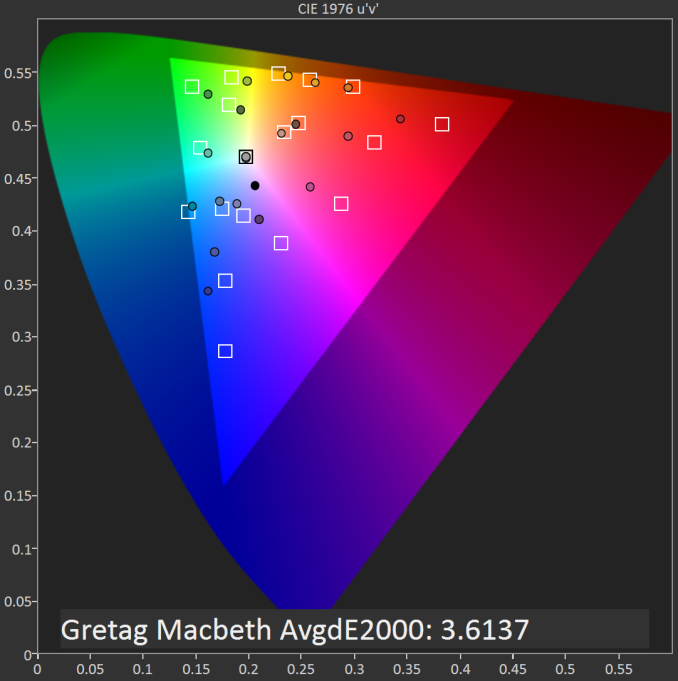








157 Comments
View All Comments
beggerking@yahoo.com - Monday, December 22, 2014 - link
you can't run flash or FULL APPLICATIONS on your Android nor icrap.this is a FULL LAPTOP on tablet form for $100.
beggerking@yahoo.com - Monday, December 22, 2014 - link
and i have Toshiba Encore II 8 which is a similar device with only 1gb ram.it runs faster than my ipad mini retina on everything and i was able to open 8-10 browsers without leg.
ados_cz - Monday, December 22, 2014 - link
Cannot agree more, very usable in deed. I have faster eMMC on Linx 7, 170 / 65 MB/s and hard-set swap file to 2GB, have not run into any problem so far.tipoo - Friday, December 19, 2014 - link
Try a tablet with 1GB RAM on Windows before talking about it, for tablet uses like mail, the browser, etc, 1GB is decent so long as you stay in Metro. This isn't for loading desktop apps on.mss2 - Friday, December 19, 2014 - link
Though even there, it depends on the desktop app. I bought one to replace the 10-year-old iPod we use to play music in the kitchen, so we run desktop iTunes (there being no Metro version, Apple presumably not being in a hurry to support a competing tablet). Fortunately, either we don't have the headphone jack issue reported here, or it's not noticeable at relatively low volumes on a dock that's not exactly audiophile-quality itself.It's easily the cheapest device that would a) hold all our music, with a microSD card, and b) support the star ratings and playlists we've already got in iTunes. (Any iDevice would be at least twice as much. I use various Android sync tools on my phone, but they don't Just Work without any issues. Mirroring the music directory from my desktop does.)
I'm not a huge fan of the onscreen keyboard (true on my Surface Pro as well; I wish Microsoft would let Swiftkey or someone take a crack at it). But for setup, I had an old folding Bluetooth keyboard first used with a Windows Mobile PDA a decade ago that still worked. Since then, it's worked fine as a music player with a sideline in light web browsing. Overall, I'm genuinely impressed at what a $99 device proves to be capable of.
tipoo - Sunday, December 21, 2014 - link
Fair point, some simpler desktop apps will also work. And also good point for a use case, streaming audio would work well on this, if the headphone jack issue was indeed just a manufacturing error and not within spec and not common.Did you try the headphone jack on actual headphones by the way? Is it noticable there?
tipoo - Friday, December 19, 2014 - link
I beg to differ, the niche, sometimes low end devices that you call "boring" are a refreshing change for me, most people aren't buying high end all the time. I was also interested in the Streams specifically as gifts for people who don't need many apps, just a Metro browser basically.eanazag - Friday, December 19, 2014 - link
I also am interested in this review. Not totally sold on the device, but the price is great. A sub $100 device does make me nervous. There are goofy things that you may want a Windows device for in the single task category. This is clearly not a do everything device.What size SD card does it support up to?
Brandon Chester - Friday, December 19, 2014 - link
I have seen it listed as "Up To 32 GB of Expandable Storage" on the pages of several retailers.mss2 - Friday, December 19, 2014 - link
I have a 64GB microSD card in mine with no issues thus far.